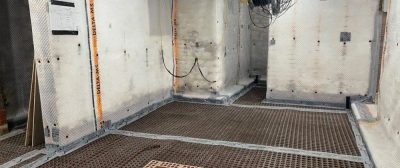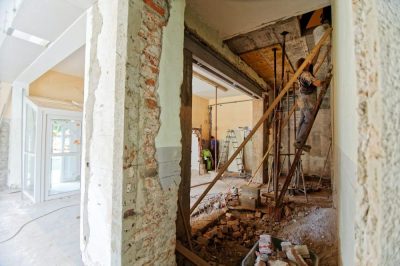
Architectural materials carry stories that reach far beyond what the eye can see. At the 18th International Architecture Exhibition in Venice, each structure hides remarkable feats of engineering that most visitors overlook. Today, architecture must rise to a new set of challenges as climate change, resource scarcity, and social inequality push designers to think beyond aesthetics.
The growing use of sustainable materials reflects this shift in perspective. German designer Carsten in der Elst, for example, works with materials that others discard. His Aluskin seating series transforms waste aluminum skins into elegant, functional art, while his use of rough sandstone “crusts” redefines beauty in imperfection.
This article explores the unseen engineering behind modern building materials and their impact on structural performance. It examines the processes that bring common materials to life, the cultural layers embedded in their use, and the innovative green alternatives shaping the future of construction.
The Invisible Backbone: Why Materials Matter in Modern Architecture
A carefully arranged selection of materials that surpasses mere esthetics lies behind every architectural masterpiece. Building materials determine how a structure performs, endures, and interacts with its environment.
From façade to foundation: unseen material roles
People admire buildings’ visual appeal, yet hidden roles of materials remain unnoticed. A well-planned architectural material selection affects everything from acoustics in an auditorium to waterproofing on a terrace. These invisible functions determine whether a building stays merely adequate or becomes exceptional. Materials create a design language that expresses brand, culture, function, and emotion through thoughtful application.
Materials contribute substantially to a building’s total greenhouse gas emissions in climate-focused construction. Green architecture needs materials that support economical construction with minimal environmental effect while creating spaces where people thrive.
Most people don’t realize that countless technical materials never see daylight. Steel constructions, to cite an instance, were historically clad with stone facades in Parisian architecture.
How material choices shape structural integrity
Local environment shapes material selection heavily. A mismatch between material properties and local conditions triggers premature failure, expensive repairs, and safety hazards. Beautiful results come from architects using building code-compliant materials with proven resistance to wear.
Material selection shapes a structure’s resilience—knowing how to absorb and recover from extreme events. Structural steel demonstrates the greatest resilience among common structural framing materials due to its inherent durability, strength, elasticity, and resistance to decomposition. Steel-framed buildings typically incur lower insurance rates of $0.08-$0.12 per $100 of value during construction compared to $0.22-$0.27 for wood.
Structural steel handles both compressive and tensile loads equally (at 50,000 psi). This helps alleviate potential failures, unlike concrete which needs reinforcing steel to overcome its weakness in tension. Steel’s high modulus of elasticity allows it to handle extreme loads without cracking or permanently deforming.
Engineering the Ordinary: Processes Behind Common Architectural Materials
Modern building materials go through complex manufacturing processes that turn raw materials into durable construction components. Engineering excellence behind these processes determines how buildings perform across centuries.
Kiln-firing in modern brick production
Brick production starts when powerful equipment mines clay and shale from open pits. Size-reduction machines process the material before it enters a pug mill where water creates a plastic clay mass. The extrusion method produces nearly 90% of U.S. bricks. This method passes clay through a de-airing chamber that keeps vacuum levels between 15 to 29 inches of mercury.
A die extrudes the clay while machines automatically cut it into individual bricks. The bricks dry at temperatures between 100°F to 400°F (38°C to 204°C) before entering kilns. The firing process happens in five crucial stages: final drying, dehydration (300°F to 1800°F), oxidation (1000°F to 1800°F), vitrification (1600°F to 2400°F), and cooling.
Reinforced concrete: steel mesh and curing chemistry
Concrete performs well under compression but struggles with tension. Steel mesh reinforcement embedded inside gives it the needed tensile strength. This combination stops cracks from growing and allows structures to handle heavier loads.
The curing process does more than just dry the concrete. Chemical reactions called cement hydration make concrete harder over time when proper moisture and temperature conditions exist. The concrete needs relative humidity above 80% and temperatures above freezing to develop optimal strength.
Cross-laminated timber (CLT) fabrication techniques
Austrian and German engineers introduced CLT panels in the early 1990s. These panels have several layers of lumber boards stacked crosswise (typically at 90 degrees) and bonded with structural adhesives. The manufacturing combines lumber selection, planning, adhesive application, panel lay-up, and pressing.
Board thickness ranges from 16mm to 51mm, while widths vary from 60mm to 240mm. Manufacturers finger-joint and kiln-dry the lumber before assembling panels. The final panels can reach up to 18m in length and 508mm in thickness.
Treated metals and their role in construction
Heat and chemical treatments give metals the strength and resilience needed for demanding architectural applications. Specialized heat treatment services, such as those provided by Team, Inc., improve the durability and performance of metals used in frameworks, façades, and structural supports.
Tempering is a key method that enhances metal toughness through precise temperature control after hardening, making it ideal for construction uses where reliability is essential. Chemical treatments, including phosphate coatings, help paint adhere more effectively while providing long-lasting crystalline protection.
Together, these methods refine the metal’s internal grain structure, producing smaller, more uniform grains that significantly improve mechanical performance and longevity in modern architecture.
Cultural and Historical Layers Embedded in Material Use
Architectural materials carry cultural heritage and historical stories beyond their structural roles. Buildings and their materials show deep links to place, tradition, and social context.
Vernacular materials in West African architecture
Mud construction across West Africa shows evidence of environmentally responsible building practices that are centuries old.
The Great Mosque of Djenne in Mali, the world’s largest mud brick building, showcases this tradition from the 13th century. These mud structures bring remarkable environmental benefits. The buildings have managed to keep their strength for generations and hold cultural value that modern structures can’t match.
Colonial legacies in material sourcing
European building traditions shaped colonial architecture with only necessary adaptations to local environments.
Spanish colonial designs took a different approach. They mixed native techniques with local materials like adobe in the Southwest, coquina stone in Florida, and sun-dried bricks in California. These choices reflected both practical needs and colonization’s power dynamics, as grand entrances and detailed decorations became symbols of authority.
Reclaiming indigenous techniques in contemporary design
Indigenous builders’ knowledge, gathered through generations of working with their environment, gives valuable lessons for today’s sustainable design. Their traditional methods put environmental health ahead of profit.
Architects like Clara Sawadogo now show how traditional materials fit into modern designs, proving vernacular architecture’s lasting value. This return to indigenous practices builds bridges between generations. The story of materials and society intertwine naturally—each building material reveals its origin, its landscape’s character, and the craftspeople who shaped it.
Sustainable Architectural Materials and the Future of Building

The shift toward eco-conscious construction is redefining how we design, source, and build. Innovative materials now combine strength, efficiency, and sustainability in ways that support a greener architectural future.
Below are some of the most promising examples shaping that transformation:
- Low-carbon concrete alternatives: Geopolymer and fly ash concrete use industrial by-products to replace Portland cement, cutting carbon emissions by up to 75%. LC3 cement also lowers emissions by around 40% through partial clinker substitution.
- Recycled aluminum and steel: With 93% recycled content and a 98% recovery rate, steel remains a top sustainable choice. Each ton recycled saves thousands of pounds of natural resources and drastically reduces energy use.
- Bio-based insulation: Hempcrete and mycelium panels provide carbon-negative insulation and strong thermal performance, reaching up to R3 per inch while using renewable raw materials.
- Lifecycle analysis in material selection: Life Cycle Assessment (LCA) helps designers evaluate a material’s total environmental impact, guiding smarter, more responsible choices.
- Timber innovation: Cross-laminated timber (CLT) and laminated veneer lumber (LVL) offer renewable, high-strength alternatives to concrete and steel, locking in carbon rather than emitting it.
- Reclaimed and adaptive materials: Salvaging wood, brick, or metal from demolition sites reduces waste and preserves the embodied energy of existing structures.
The Living Legacy of Material Innovation
Architecture tells its most honest stories through the materials that shape it. Each brick, beam, and panel carries within it a record of human ingenuity and environmental awareness. As building technology evolves, so too does the moral and creative responsibility of design.
Innovation in sustainable materials shows that progress no longer depends on excess but on thoughtful refinement. When recycled steel strengthens a skyline, when treated timber replaces concrete, or when discarded aluminum becomes art, the line between craftsmanship and conservation begins to blur.
The architecture of the future will not just be admired for its form. It will be remembered for how it balanced artistry with restraint, ambition with care, and engineering with empathy.








